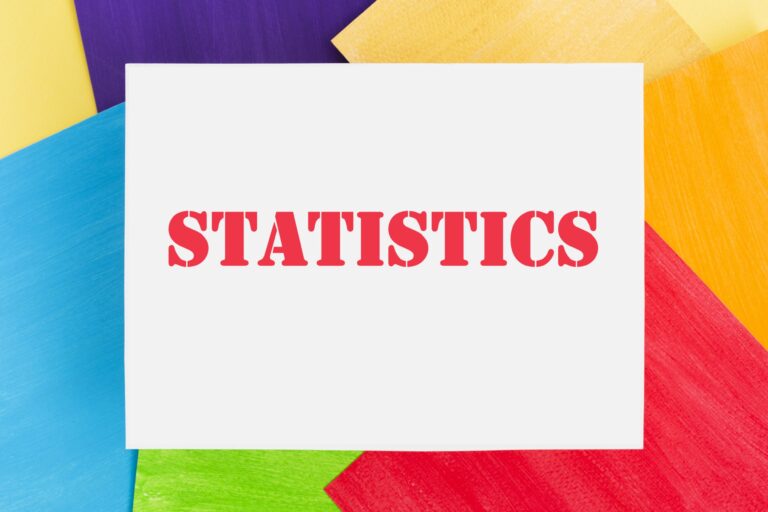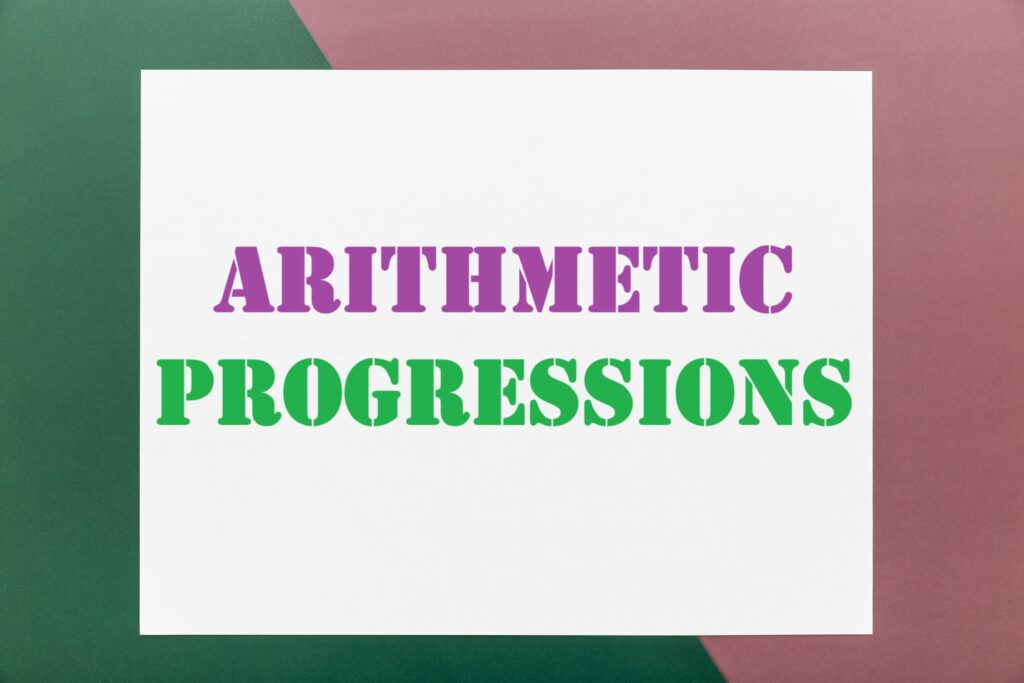
Arithmetic Progressions
Answer Key-
Multiple Choice questions-
Very Short Answer :
∴ (k + 10) – 2k = (3k + 2) – (k + 10)
⇒ -k + 10 = 2k – 8 or 3k = 18 or k = 6.
Let d be the common difference
d = an+1 – an
= 5 – 11(n + 1) – (5 – 11n)
= 5 – 11n – 11 -5 + 11n = -11

∴ second term – First term = Third term – second term
⇒ 13 – (2p + 1) = 5p – 3 – 13
⇒ 13 – 2p – 1 = 5p – 16
⇒ 12 – 2p = 5p – 16
⇒ -7p = – 28
⇒ p = 4
Putting the values given, we get
⇒ 4 = a + (7 – 1)(-4) or a = 4 + 24
⇒ a = 28
We know,
a25 = a + (25 – 1 )d
= (-5) + 24(52) = -5 + 60 = 55
⇒ (a + 17d) – (a + 13d) = 32
⇒ 17d – 13d = 32 or d =324
Short Answer :
Here 200 -150 = 250 – 200 = 300 – 250 and so on
∴ It forms an AP with a = 150, d = 50
(ii) The numbers involved are 10,800, 11,600, 12,400, …
which forms an AP with a = 10,800 and d = 800.
And, common difference d = 2nd term – 1st term = 8 – 3 = 5
Therefore, 20th term from end = 1 -(20 – 1) × d = 253 – 19 × 5 = 253 – 95 = 158.
= ap2 + bp – (ap2 + a – 2ap + bp – b)
= ap2 + bp – ap2 – a + 2ap – bp + b = 2ap + b-a .
= a1 = 2a + b – a = a + b and a2 = 4a + b – a = 3a + b
⇒ d = a2 – a1 = (3a + b) – (a + b) = 2a
Given, a = 5, Tn = 45, sn = 400 .
Tn = a + (m – 1)d
⇒ 45 = 5 + (m – 1)d
⇒ (n – 1) d = 40 ………(i)
sn = n2 (a + Tn)
⇒ 400 = n2 (5 + 45)
⇒ n = 2 × 8 = 16 substituting the value of n in (i)
⇒ (16 – 1)d = 40
⇒ d = 4015 = 83
so, a1 = 110, d = 10, an = 990
We know, an = a1 + (n – 1)d
990 = 110 + (n – 1) 10
(n – 1) = 990−11010
⇒ n = 88 + 1 = 89
3, 8, 13, 18, …..
Here, a = 3, d = 8 – 3 = 5 and an = 78
Now, an = a + (n – 1)d
⇒ 78 = 3 + (n – 1) 5
⇒ 78 – 3 = (n – 1) × 5
⇒ 75 = (n – 1) × 5
⇒ 755 = n – 1
⇒ 15 = n – 1
⇒ n = 15 + 1 = 16
Hence, 16th term of given AP is 78.
Now, we have

Putting the value of d in equation (i), we have
a + 10 × 7 = 38
⇒ a + 70 = 38
⇒ a = 38 – 70
⇒ a = – 32
We have, a = -32 and d = 7
Therefore, a31 = a + (31 – 1)d
⇒ a31 = a + 30d
⇒ (-32) + 30 × 7
⇒ – 32 + 210
= a31 = 178
since, given AP consists of 50 terms, so n = 50
a3 = 12
⇒ a + 2d = 12 …(i)
Also, a50 = 106
⇒ a + 490 = 106 … (ii)
subtracting (i) from (ii), we have
47d = 94
⇒ d = 9447 = 2
Putting the value of d in equation (i), we have
a + 2 × 2 = 12
⇒ a = 12 – 4 = 8
Here, a = 8, d = 2
∴ 29th term is given by
a29 = a + (29 – 1)d = 8 + 28 × 2
⇒ a29 = 8 + 56
⇒ a29 = 64
We have, a8 = 31 and a15 = 16 + a11
⇒ a + 7d = 31 and a + 14d = 16 + a + 10d
⇒ a + 7d = 31 and 4d = 16
⇒ a + 7d = 31 and d = 4
⇒ a + 7 × 4 = 31
⇒ a + 28 = 31
⇒ a= 3
Hence, the AP is a, a + d, a + 2d, a + 3d…..
i.e., 3, 7, 11, 15, 19, …
∴ a31 = a + 30d = 5 + 30 × 10 = 305
Let nth term of the given AP be 130 more than its 31st term. Then,
an = 130 + a31
∴ a + (n – 1)d = 130 + 305
⇒ 5 + 10(n – 1) = 435
⇒ 10(n – 1) = 430
⇒ n – 1 = 43
⇒ n = 44
Hence, 44th term of the given AP is 130 more than its 31st term.
Long Answer :
⇒ a + (4 – 1)d + a + (8 – 1) d = 24
⇒ 2a + 3d + 7d = 24
⇒ 2a + 10d = 24
⇒ 2(a + 5d) = 24
∴ a + 5d = 12
and, a6 + a10 = 44
⇒ a + (6 – 1)d + a + (10 – 1) d = 44
⇒ 2a + 5d + 9d = 44
⇒ 2a + 14d = 44
⇒ a + 7d = 22
subtracting (i) from (ii), we have
2d = 10
∴d =102 = 5
Putting the value of d in equation (i), we have
a + 5 × 5 = 12
⇒ a = 12 – 25 = -13
Here, a = -13, d = 5
Hence, first three terms are
-13, -13, + 5, -13 + 2 × 5 i.e., -13, -8, -3
Replacing n by (n – 1), we get
sn-1 = 3(n – 1)2 – 4(n – 1) ….(ii)
We know, .
an = sn – sn-1 = {3n2 – 4n} – {3(n – 1)2 – 4(n – 1)}.
= {3n2 – 4n} – {3n2 + 3 – 6n – 4n + 4}
= 3n2 – 4n – 3n2 – 3 + 6n + 4n – 4 = 6n – 7
so, nth term an = 6n – 7
To get the AP, substituting n = 1, 2, 3… respectively in (iii), we get
a1 = 6 × 1-7 = -1,
a2 = 6 × 2 – 7 = 5
a3 = 6 × 3 – 7 = 11,…
Hence, AP is – 1,5, 1:1, …
Also, to get 12th term, substituting n = 12 in (iii), we get
a12 = 6 × 12 – 7 = 72 – 7 = 65
Given, (a – 3d) + (a – d) + (a + d) + (a + 3d) = 56
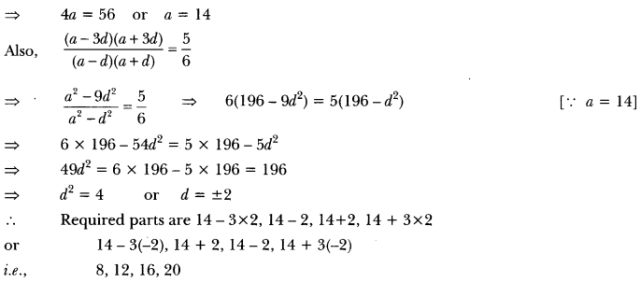

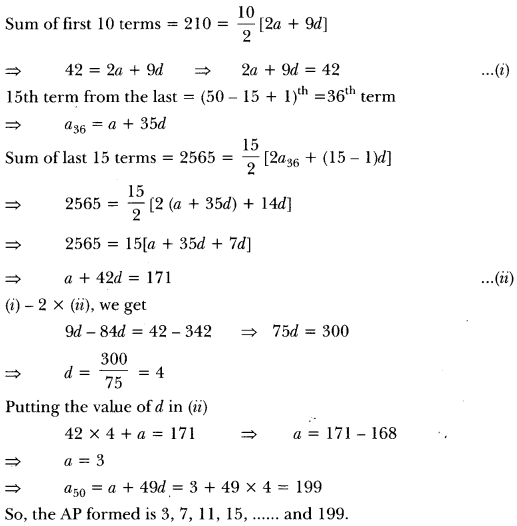
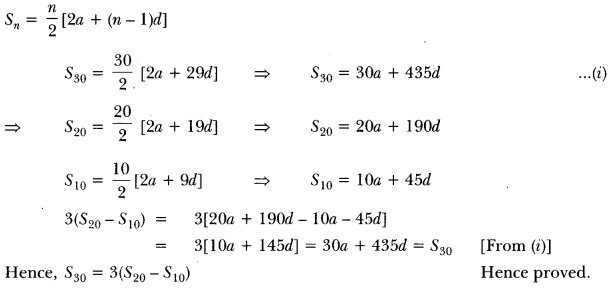
Total distance covered by thief = 100 n metres
Total distance covered by policeman = 100 + 110 + 120 + … + (n – 1) terms
∴ 100m = n−12 [100(2) + (n – 2)10]
⇒ 200n = (n – 1)(180 + 10n)
⇒ 102– 30n – 180 = 0
⇒ n2 – 3n – 18 = 0
⇒ (n-6) (n + 3) = 0
⇒ n = 6
Policeman took (n – 1) = (6 – 1) = 5 minutes to catch the thief.
The numbers of the houses are in AP, where a = 1 and d = 1
sum of n terms of an AP = n2[2a + (n – 1)d]
Let Xth number house be the required house.
sum of number of houses preceding Xth house is equal to sx-1 i.e.,
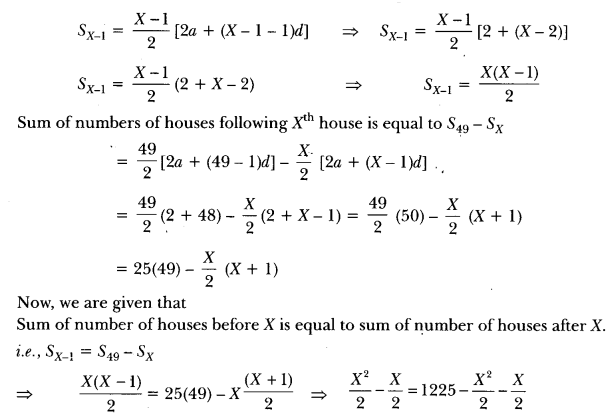

since number of houses is positive integer,
∴ X = 35


8, 16, 24, … 120
Clearly, these numbers are in AP with first term a = 8 and common difference, d = 16 – 8 = 8

10, 13, 16, 19, …, 97, which forms an AP.
with a = 10, d = 3, an = 97
an = 97 = a + (n – 1) d = 97
or 10 + (n – 1)3 = 97
⇒ (n – 1) = 873 = 29
⇒ n = 30
Now, s30 = [2 × 10 + 29 × 3) = 15(20 + 87) = 15 × 107 = 1605
Case Study Answers:
Here the smallest 3-digit number divisible by 7 is 105. So, the number of bacteria taken into consideration is 105, 112, 119, …. 994 So, first term (a) = 105, d = 7 and last term = 994.
Solution:
t5 = a + 4d = 105 + 28 = 133
Solution:
Let n samples be taken under consideration
∵ Last term = 994
⇒ a + (n – d)d = 994
⇒ 105 + (n – 1)7 = 994
⇒ n = 128
Solution:
Total number of bacteria in first 10 samples
![]()
Solution:
t7 from end = (128 – 7 + 1) term from beginning = 122th term = 105 + 121(7) = 952
Solution:
t50 = 105 + 49 × 7 = 448
Geeta’s A.P. is -5, -2, 1, 4, … Here, first term (a1) = -5 and conunon difference (d1) = -2 + 5 = 3 Similarly, Madhuri’s A.P. is 187, 184, 181, … Here first term (a2) = 187 and common difference (d2) = 184 – 187 = -3
Solution:
t34 = a2 + 33d2 = 187 + 33(-3) = 88
Solution:
Required sum = 3 + (-3) = 0
Solution:
t19 = a1 + 18d1 = (-5) + 18(3) = 49
Solution:
![]()
Solution:
Let nth terms of the two A.P s be equal.
∵ -5 + (n – 1)3 = 187 + (n – 1)(-3)
⇒ 6(n – 1) = 192
⇒ n = 33
Assertion Reason Answer-


